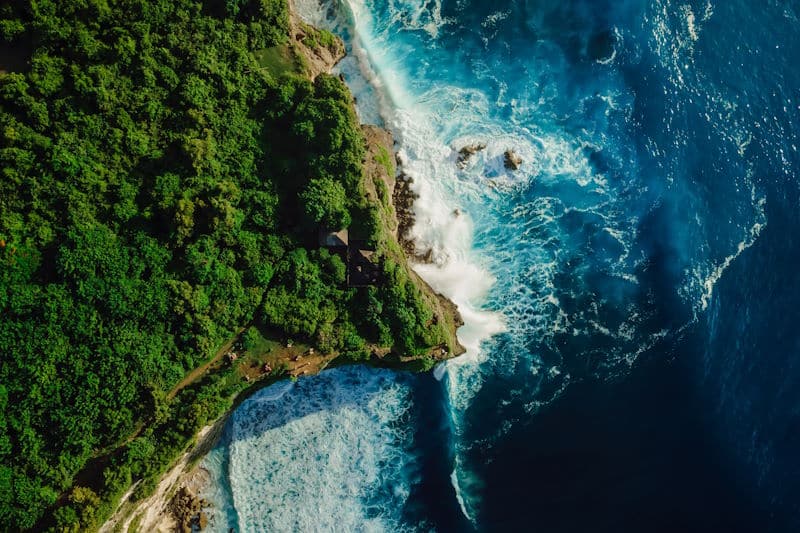
Mangroves, often referred to as the “guardians of the coast,” play a vital role in protecting coastal communities from the ravages of storms and erosion.
These remarkable trees, found in tropical and subtropical regions, offer a natural defense mechanism that is crucial for the safety and sustainability of coastal areas.
At Save Mangroves Nursery, we are dedicated to promoting the importance of mangroves and their incredible benefits. Here’s how mangroves protect coastal communities from storms and erosion.
1. Natural Barriers Against Storm Surges
Mangroves act as natural barriers against storm surges, which are elevated water levels caused by severe weather conditions like hurricanes and typhoons. The dense network of roots and trunks slows down the movement of water, reducing the height and energy of storm surges before they reach inland areas.
This buffering effect can significantly mitigate the impact of storms on coastal communities, preventing flooding and reducing property damage, and according to Nature.com, mangrove forests are a necessary component for coastal defense.
2. Wave Energy Dissipation
The complex root systems of mangroves are highly effective at dissipating wave energy. As waves move through the mangrove forests, their energy is absorbed and diminished by the roots and trunks. This process helps to protect shorelines from the erosive force of waves, preserving beaches and preventing the loss of valuable land.
By reducing wave energy, mangroves help maintain the stability and integrity of coastal areas.
Here’s a short video showing how mangrove forests protect the coast.
3. Soil Stabilization
Mangroves play a crucial role in soil stabilization. Their extensive root systems bind and trap sediments, preventing soil erosion and promoting the accumulation of nutrient-rich sediments. A study conducted by The Nature Conservancy say that this process not only helps to build and maintain coastal landforms but also creates fertile grounds for other vegetation and marine life.
The stabilization of soil is essential for the health and resilience of coastal ecosystems and communities.
4. Habitat for Marine Life
Mangroves provide a critical habitat for a wide variety of marine species, including fish, crustaceans, and mollusks. These species often rely on mangroves for breeding, feeding, and shelter. Healthy mangrove ecosystems support vibrant marine populations, which are vital for local fishing communities.
By sustaining marine life, mangroves contribute to the economic stability and food security of coastal communities.
5. Carbon Sequestration
Mangroves are highly efficient at sequestering carbon, capturing and storing large amounts of carbon dioxide from the atmosphere. This process helps to mitigate the effects of climate change, which can exacerbate storm intensity and sea-level rise.
By absorbing carbon dioxide, mangroves contribute to global climate regulation and enhance the resilience of coastal communities to climate-related impacts.
6. Biodiversity and Ecosystem Services
Mangroves are hotspots of biodiversity, supporting a wide range of plant and animal species. The ecosystem services provided by mangroves, such as water filtration, nutrient cycling, and habitat provision, are essential for the health and well-being of coastal communities.
By maintaining biodiversity, mangroves ensure the sustainability of the ecosystem services that coastal communities rely on for their livelihoods and quality of life.
7. Socio-Economic Benefits
The protection provided by mangroves extends beyond environmental benefits to include significant socio-economic advantages. By safeguarding coastal infrastructure and reducing the need for costly artificial defenses, mangroves help to save millions of dollars in storm damage and erosion control.
Furthermore, the tourism and recreational opportunities offered by healthy mangrove ecosystems can generate additional income for local communities.
8. Community Resilience and Adaptation
Mangroves enhance the resilience and adaptive capacity of coastal communities. By providing natural protection against storms and erosion, mangroves enable communities to better withstand and recover from extreme weather events.
Engaging in mangrove restoration and conservation efforts also fosters a sense of stewardship and community involvement, strengthening social cohesion and resilience.
🛑 For more tips on avoiding common pitfalls, refer to our post on Common Mistakes to Avoid When Growing Red Mangroves in Aquariums.
Mangroves are indispensable allies in the fight against coastal erosion and storm damage. Their ability to dissipate wave energy, stabilize soil, support marine life, and sequester carbon makes them vital for the protection and sustainability of coastal communities.
At Save Mangroves Nursery, we are committed to raising awareness about the importance of mangroves and promoting their conservation.
How Do I Choose My Very First Plant?
So you have learned about the incredible benefits of adding mangrove plants to your tank, but you still don’t know which exact plant to add to your specific tank size?
Don’t worry, because we’ve created an easy Step-by-Step guide to help you with your selection process.
Click the button below to find out which plant is perfect for your aquarium.

 Cart is empty
Cart is empty 
